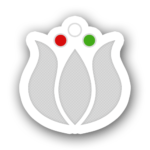About Indian Head Massage
Indian head massage uses and adapts classic Swedish massage techniques for treating scalp, face, neck, shoulders and upper arms.
It works on the areas of the body that are most affected by stress, however while the treatment is just on the upper part of the body it’s effects are felt throughout the mind and body.
Indian families use massage daily both for relaxation and healing. They value the power of contact and enjoy the stress reducing benefits of touch. From an early age children are taught to give head massage so that each family member can both give and receive a treatment.
Barbers in India have used stimulating and invigorating head massage known as ‘champi’ during their treatments. The techniques have been passed down through the generations from barber father to son.
Over the centuries practitioners of alternative medicine have recognised the benefits of massage, particularly scalp massage to relieve tension and stress. In the West the traditional scalp massage used in India has evolved to become the Indian head massage.
Benefits of indian head massage:
- Skin – encourages desquamation and thereby improving skin tone and colour
- Hair – increases circulation to the scalp which helps improve hair condition and promotes healthy hair growth
- Eyes – relaxes and soothes tense eye muscles
- Skeletal system – helps increase joint mobility and flexibility in shoulders, neck and arm. It improves posture and reduces tension in the tissues making them more flexible which minimises the stress on bones and joints, reducing their need to overwork to compensate for muscles not working properly
- Muscular system – improved circulation helps remove waste particularly lactic acid, from muscles reducing aches and soreness. The treatment on the head, neck and shoulder helps reduce tension, sinusitis and congestion. It stretches the tissues, increases flexibility, and releases tightness in overworked or tense muscles. Stress reduction helps prevent stress-induced muscle spasm in back as well as shoulders and arms; reduction in inflammation or pain and headaches
- Circulatory system – improves circulation, thus improving the delivery of nutrients and oxygen and speeding up the removal of wastes and toxins; lowers blood pressure
- Lymphatic system – improves lymphatic circulation thus speeding up the removal of excess fluid and waste from cells, helping to reduce swelling or oedema and reducing the risk of infection through improved production and delivery of white blood cells
- Nervous system – reduces effects of stress thus facilitating sleep, reduces anxiety, slows down heart rate, improves breathing, releases physical and mental tension, promotes feelings of calm and well-being; helps unblock congestion throughout the body enabling improved neural communication; release of tension increases energy levels; relieves mental and physical strain thereby improving concentration
- Chakras – an increased feeling of awareness and a sense of calm, peace and tranquillity due to the rebalancing of the chakras








